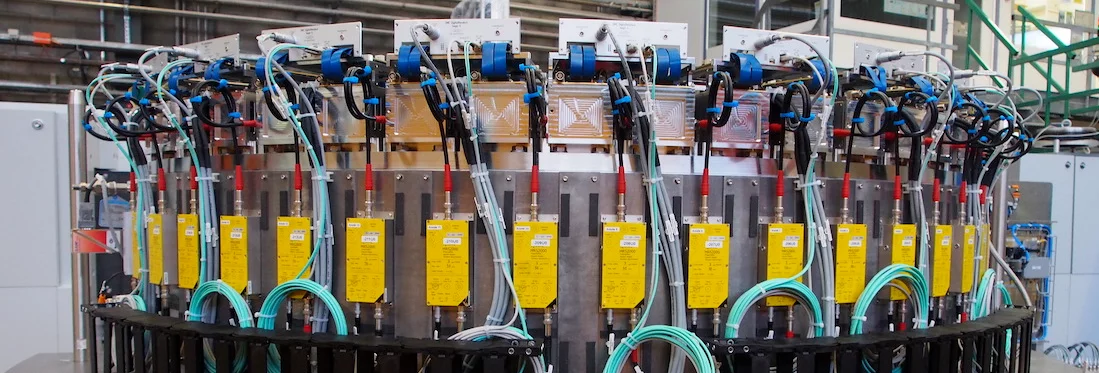The cold neutron diffractometer DMC is a flexible instrument for efficient neutron powder and single-crystal diffraction studies in the fields of crystallography, solid state physics, chemistry and material science, in particular for the determination of weak magnetic intensities. Special features are the large high-efficiency 3He detector with 2D readout, the oscillating radial collimator system to suppress peaks from the sample environment and low instrumental background due to optimized shielding. The versatility of the instrument is supported by a large diversity of available sample environment devices. Situated at a cold neutron guide and with the accessible wavelength range of 2.3 Å to 5 Å, DMC is complementary to the thermal high-resolution diffractometer HRPT and is designed for high-intensity performance.
DMC has been extensively modernized in recent years. After replacing the cold neutron guide, DMC was equipped with a large high-performance neutron detector. Special features are high detection efficiency, the coverage of a large solid angle and the two-dimensional readout. The increase of the count rate for powder experiments by more than an order of magnitude, as well as the event-based neutron detection enable novel applications and experimental possibilities which were not feasible at SINQ so far. In addition to efficient powder experiments, the large solid angle covered, combined with dedicated software for data reduction and transformation, enables a new single-crystal mode for mapping reciprocal planes.
Typical experiments on DMC are the determination of magnetic structures on powder samples, the efficient measurement of magnetic or crystallographic phase transitions, the analysis of large unit cell structures, reciprocal space mapping in single crystals, and many more. Some examples of DMC results are listed in the publications section.
Details of the instrument can be found in the description section, in particular the instrumental parameters and the available sample environment for DMC.
DMC is operated by the Laboratory for Neutron Scattering and Imaging LNS.
SINQ - call for proposals II-25, proposal submission deadline: 15 May 2025
The Digital User Office will be open for proposal submission approximately 4-5 weeks before the deadline. Of course editing and saving of proposals is possible any time.

